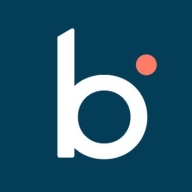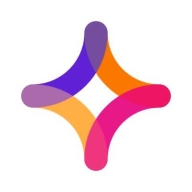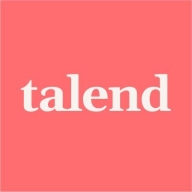


Find out what your peers are saying about Microsoft, Salesforce, SAP and others in Integration Platform as a Service (iPaaS).
We have automated complete order-to-cash processes for multiple customers, saving over 90 million dollars.
The return is faster since development efforts are minimized, allowing for quicker integration delivery.
We actually achieved the first 18 months worth of work in the first six months.
The tech support is very good, offering immediate responses and chat options.
Seamlessly meeting SLAs and providing excellent responses to challenges and issues related to interface and data connectivity.
We receive service that is more than adequate, even exceptional.
The reason we wanted to use our own Kubernetes cluster was to do automatic scaling for utilized resources, allowing us to save.
We have built approximately 1,100 interfaces for one customer, which is a significant achievement.
We have not encountered many issues with remote engines, and the interfaces are properly developed.
With proper version control, you could know which version to revert to and test other versions.
The ETL aspect of Boomi iPaaS is not mature enough at the moment.
The integration landscape has become complex, and having a data strategy with unified data models would make integration easier for any platform, including Boomi.
On the flip side, that is one of its amazing strengths, as you are not locked into a very rigid way of doing something.
Data management could also encompass APIs and real-time streaming data integration.
While pricing is relative, compared to others, it is favorable.
The pricing for Boomi iPaaS is reasonable, costing around $6,000 per year.
It automates the creation and population of a data warehouse, reducing the need to write SQL scripts and procedures.
The integrations and API management are particularly beneficial.
When developers learn how to use it, they become productive sooner.
Having access to Talend support directly from TNC proved quite beneficial.
| Product | Market Share (%) |
|---|---|
| Boomi iPaaS | 12.5% |
| Microsoft Azure Logic Apps | 12.4% |
| MuleSoft Anypoint Platform | 10.4% |
| Other | 64.7% |
| Product | Market Share (%) |
|---|---|
| Jitterbit Harmony | 0.6% |
| Informatica PowerCenter | 6.0% |
| SSIS | 5.7% |
| Other | 87.7% |
| Product | Market Share (%) |
|---|---|
| Talend Data Management Platform | 1.1% |
| Informatica PowerCenter | 6.0% |
| SSIS | 5.7% |
| Other | 87.2% |



| Company Size | Count |
|---|---|
| Small Business | 9 |
| Midsize Enterprise | 4 |
| Large Enterprise | 15 |
| Company Size | Count |
|---|---|
| Small Business | 8 |
| Midsize Enterprise | 3 |
| Large Enterprise | 1 |
| Company Size | Count |
|---|---|
| Small Business | 9 |
| Midsize Enterprise | 5 |
| Large Enterprise | 8 |
The Boomi AtomSphere integration platform as a service (iPaaS) supports all your application integration processes – between cloud platforms, software-as-a-service applications, and on-premises systems. Your entire team has online access to a powerful range of integration and data management capabilities, that can be realized in a fraction of the time of legacy middleware technologies.
Jitterbit Harmony offers an advanced integration platform that simplifies data transformation, helps users quickly connect apps, and automates workflows, streamlining complex business processes efficiently.
Designed to meet the high demands of modern businesses, Jitterbit Harmony enables seamless integration across cloud and on-premise environments. By leveraging its powerful tools and user-friendly design, users can accelerate innovation, reduce operational costs, and enhance productivity. It bridges the gap between traditional and emerging technologies, ensuring organizations can adapt quickly to market changes and remain competitive.
What are the key features of Jitterbit Harmony?Jitterbit Harmony finds its application across numerous industries, from enhancing data integration in the healthcare sector to optimizing supply chain logistics in manufacturing. It supports financial institutions by improving transaction processing and facilitates real-time data connectivity in retail environments, making it a versatile choice for diverse industries looking to innovate rapidly.